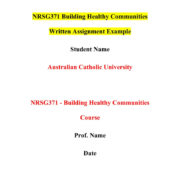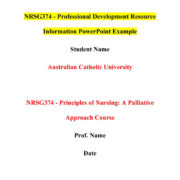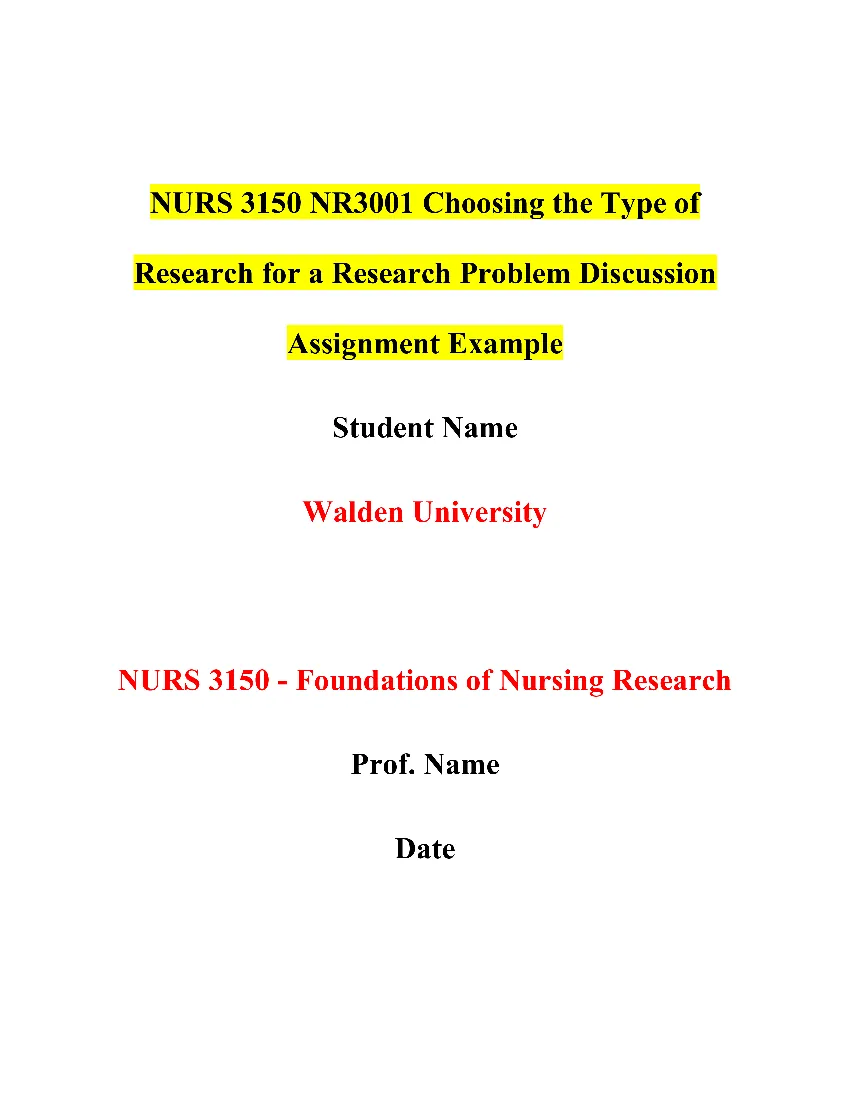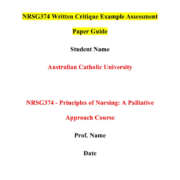ANP 650 Advanced Practice Rules for Nurse Practitioners Example
 Assignment Brief: ANP 650 Advanced Practice Rules for Nurse Practitioners Example
Assignment Brief: ANP 650 Advanced Practice Rules for Nurse Practitioners Example
Assignment Instructions Overview:
The primary objective of this assignment is to research on the advanced practice rules for nurse practitioners, focusing on state-specific regulations. For this instance, the target states are California and Nevada, with an additional analysis of Arizona. Learners will explore the nurse practice acts, professional codes, business practices, invasive procedure privileges, standards for nurse practitioners, and regulations for ordering medications and devices within these states.
Understanding Assignment Objectives:
- California-based Learners:
- Read Nurse Practice Act: Acknowledge reading the Nurse Practice Act for California, available through the “Board of Nursing Links by State” on the Student Success Center under the AGACNP tab.
- Identify Professional Codes: Identify professional codes and business practices regulated by the California Board of Nursing for nurse practitioners.
- Standardized Procedure Guidelines: Explain how standardized procedure guidelines are governed within California.
- Standards for Nurse Practitioners: Detail at least two standards outlined by the California Board of Nursing for nurse practitioners.
- Regulations for Medications: Discuss regulations for furnishing and ordering medications, drugs, and devices within the state.
- Learners in States Other Than California (e.g., Nevada):
- Read State Nurse Practice Act: Identify the state in which you practice and acknowledge reading your state’s Nurse Practice Act using the “Board of Nursing Links by State.”
- Professional Codes: Identify professional codes and business practices regulated by the state for nurse practitioners.
- Invasive Procedure Privileges: Explain how invasive procedure privileges are granted within your state.
- Standards for Nurse Practitioners: Detail at least two standards outlined by your state’s Board of Nursing for nurse practitioners.
- Regulations for Medications: Discuss regulations for ordering medications and devices within your state.
- Both California and Other States (e.g., Nevada) Learners:
- National, State, and Local Regulations Impact: Discuss how national, state, and local regulations affect the AGACNP scope and practices.
- Support with Resources: Support your response with a minimum of two APRN peer-reviewed resources.
The Student’s Role:
- Research and Analysis:
- Thoroughly research the Nurse Practice Acts, professional codes, and business practices specific to your state.
- Analyze the regulations governing standardized procedure guidelines, invasive procedure privileges, and medication ordering within your state.
- Comparative Analysis:
- If applicable, compare and contrast the regulations in your state with those in California, focusing on the standards set for nurse practitioners and the processes for medication orders.
- Resource Integration:
- Integrate a minimum of two APRN peer-reviewed resources to support your discussion on the impact of national, state, and local regulations on AGACNP scope and practices.
- Critical Reflection:
- Reflect critically on the implications of these regulations on the role of Adult-Gerontology Acute Care Nurse Practitioners (AGACNPs) in your state, considering patient care, autonomy, and collaboration with other healthcare providers.
Submission Guidelines:
- Submit a well-organized and articulate paper, addressing the outlined components.
- Ensure clarity, coherence, and proper citation of all referenced resources.
- Adhere to the APA format for citations and the overall structure of the paper.
Evaluation Criteria:
- Comprehensive understanding and integration of state-specific regulations.
- Critical analysis and comparison of regulations, where applicable.
- Clear discussion on the impact of national, state, and local regulations on AGACNP scope and practices.
- Effective integration of a minimum of two peer-reviewed resources to support arguments and reflections.
- Adherence to submission guidelines, including word count and APA format.
Detailed Discussion Assignment Instructions: Assessment Description
Topic 1 DQ 2
For California-based learners, review the advanced practice rules for nurse practitioners in California using the resource, “Board of Nursing Links by State,” located on the college page of the Student Success Center under the AGACNP tab.
In your response, acknowledge that you have read the Nurse Practice Act for California. Identify the professional codes and business practices regulated by the California Board of Nursing for nurse practitioners. Explain how standardized procedure guidelines are governed within California, detail at least two standards for nurse practitioners outlined by the California Board of Nursing, and discuss the regulations of furnishing and ordering medications, drugs, and devices within the state.ANP-650 topic 1 dq 2 advanced practice rules for nurse practitioners How do national, state, and local regulations affect the AGACNP scope and practices? Support your answer with a minimum of two APRN peer-reviewed resources.
For learners based in states other than California, review the advanced practice rules for nurse practitioners in your respective state using the resource, “Board of Nursing Links by State,” located on the college page of the Student Success Center under the AGACNP tab.
In your response, identify the state in which you practice and acknowledge that you have read your state’s Nurse Practice Act. Identify the professional codes and business practices regulated by the state for nurse practitioners and explain how invasive procedure privileges are granted within your state. Detail at least two standards for nurse practitioners within your state and discuss the regulations for ordering medications and devices within your state. How do national, state, and local regulations affect the AGACNP scope and practices? Support your answer with a minimum of two APRN peer-reviewed resources.
ANP 650 Advanced Practice Rules for Nurse Practitioners Examples
ANP 650 Topic 1 DQ 2: Advanced Practice Rules for Nurse Practitioners in Nevada
I have meticulously reviewed the Nurse Practice Act for the State of Nevada, where I practice as a registered nurse. The Nevada Administrative Code (NAC) Chapter 632, specifically the section related to Nursing, serves as the comprehensive legal framework governing the practice of advanced practice nurses (APNs) in the state (Nevada Administrative Code, 2019).
Professional Codes and Business Practices
Nevada, being a full-practice state, has recognized the role of advanced practice nurses, allowing them to be reimbursed up to 85% by third-party payors (Kleinpell et al., 2023; Phillips, 2021). However, it’s noteworthy that under state law, APNs are not designated as primary care providers, even though they have the authority to admit and care for patients in the acute care setting (Phillips, 2021).
The Nurse Practice Act in Nevada encompasses various professional codes and business practices aimed at regulating the conduct of advanced practice registered nurses (APRNs). One notable requirement is the obligation for APRNs to maintain professional liability insurance, emphasizing the importance of accountability in their practice (NAC, 2019). Furthermore, APRNs are mandated to maintain a professional portfolio containing essential documents such as copies of professional licenses, proof of liability insurance, a list of practice locations, evidence of national certifications, continuing education records, and transcripts from educational institutions (NAC, 2019).
Invasive Procedure Privileges
In Nevada, the grant of invasive procedure privileges is subject to specific parameters outlined in the Nurse Practice Act. APRNs are eligible for these privileges if they have been certified to perform the procedure by a board-recognized organization, if the procedure was part of their educational program, if individually approved by the board, or if taught by a physician or another APRN and described as performed by an APRN in national nursing publications or guidelines (NAC, 2019).
Authorization to issue written prescriptions for controlled substances, dangerous drugs, poisons, or devices is contingent on the APRN’s application for this privilege through the board. Additionally, attendance at a program of advanced pharmacotherapeutics or other courses meeting board requirements and intended for the APRN’s population of focus is a prerequisite for this authorization (NAC, 2019).
Standards for Nurse Practitioners
The Nevada Nurse Practice Act delineates several standards that APRNs are expected to adhere to in their practice. Effective communication and collaboration with other healthcare providers involved in patient care is emphasized, aligning with the collaborative nature of healthcare delivery (NAC, 2019). Another critical standard pertains to the APRN’s recognition, understanding, and accommodation of patient choices related to their social, cultural, and religious beliefs regarding psychological and physiological health (NAC, 2019).
Communication and collaboration are integral components of the nursing profession, and these standards further underscore the importance of these skills in the advanced practice role. Recognizing and respecting patient choices aligns with the holistic approach to patient care and reflects the ethical principles guiding nursing practice (DeNisco, 2019).
Regulations for Ordering Medications and Devices
APRNs in Nevada have the autonomy to order medications and devices independently once they fulfill specific requirements outlined by the Nevada State Board of Nursing (NSBON). If applying for a license in Nevada after practicing for 2000 hours or two years in another state, an APRN can independently order medications and devices (NSBON, n.d.). For newly certified APRNs, a collaborative agreement with a physician is mandatory for the first 1000 hours without prescribing privileges (NSBON, n.d.).
Moreover, in addition to the regulation by the state board of nursing, APRNs, particularly those specializing in adult-gerontological acute care, are subject to requirements from other state regulatory bodies. These bodies may include the state board of medical examiners and state pharmacy boards, further influencing the scope and practices of APRNs (DeNisco, 2019).
Impact of National, State, and Local Regulations on AGACNP Scope and Practices
National, state, and local regulations play a pivotal role in shaping the scope and practices of Adult-Gerontology Acute Care Nurse Practitioners (AGACNPs). These regulations, often complex and multifaceted, are crucial for ensuring standardized and safe practice while also influencing aspects such as patient access, reimbursement, and quality control (DeNisco, 2019).
On the national level, regulatory processes impact patient access to APRNs, reimbursement mechanisms, and the overall quality of care. Kleinpell et al. (2023) highlight the significance of addressing barriers to APRN practice, especially during critical periods such as the COVID-19 pandemic. National regulatory implications can either facilitate or hinder the ability of AGACNPs to respond effectively to evolving healthcare needs.
State-level regulations, as evident in the Nevada Nurse Practice Act, define the specific parameters within which AGACNPs can operate. The recognition of APNs as full-practice providers in Nevada reflects a progressive approach, allowing them a significant degree of autonomy in patient care. However, nuances, such as the non-recognition of APNs as primary care providers, indicate the need for ongoing advocacy and regulatory refinement.
Local regulations, often enforced by entities like state boards of medical examiners and pharmacy boards, add a layer of complexity to AGACNP practice. These regulations may vary, requiring AGACNPs to navigate diverse sets of rules and requirements depending on their practice location within the state.
In conclusion, the regulatory landscape for AGACNPs is intricate, involving a dynamic interplay of national, state, and local regulations. While national regulations set the broader context, state and local regulations provide the specific parameters that shape the scope and practices of AGACNPs. Awareness of and engagement with these regulatory frameworks are essential for AGACNPs to navigate their roles effectively, ensuring high-quality patient care within the bounds of legal and professional standards. Advocacy efforts at all levels are crucial to address barriers, promote autonomy, and enhance the contributions of AGACNPs to the evolving healthcare landscape.
References
DeNisco, S. M. (2019). Advanced practice nursing (4th ed.). Jones & Bartlett Learning.
Kleinpell, R., Myers, C. R., & Schorn, M. N. (2023). Addressing barriers to APRN practice: Policy and regulatory implications during COVID-19. Journal of Nursing Regulation, 14(1), 13–20. https://doi.org/10.1016/s2155-8256(23)00064-9
Nevada Administrative Code, Chapter 632-Nursing. (2019). https://www.leg.state.nv.us/NAC/NAC-632.html#NAC632Sec259
Nevada State Board of Nursing. (n.d.). APRN licensure-Frequently asked questions [PDF]. https://nevadanursingboard.org/wp-content/uploads/2019/12/APRN-FAQs.pdf
Phillips, S. J. (2021). 33rd Annual APRN Legislative Update. The Nurse Practitioner, 46(1), 27–55. https://doi.org/10.1097/01.npr.0000724504.39836.69
ANP-650 Topic 1 DQ 2: Advanced Practice Rules for Nurse Practitioners in Arizona
I have carefully reviewed the Arizona Nurse Practice Act to gain insights into the regulatory framework governing the practice of advanced practice nurses (APNs) in the state. The Arizona State Board of Nursing (AZBN) plays a pivotal role in establishing and enforcing rules and regulations aimed at ensuring the safety and well-being of the public (Arizona State Board of Nursing, n.d).
Licensure and Competence Assessment
The primary objective of the Nurse Practice Act in Arizona is to regulate and protect the public by establishing rigorous standards for competence and proficiency among healthcare practitioners. This is achieved through the licensure process, where individuals must demonstrate complete competence in their respective scopes of practice by successfully passing the board examination (Arizona State Board of Nursing, n.d). Licensure is a cornerstone regulation, making it illegal for individuals to perform any advanced practice nursing tasks without a valid license.
The AZBN recognizes the dynamic nature of healthcare and, to ensure ongoing competence, implements mandatory annual education requirements for APNs. This requirement is essential for APNs to stay abreast of advancements in healthcare and to maintain the knowledge necessary for effective and safe practice (Arizona State Board of Nursing, n.d).
Regulatory Methods for Patient Safety
For Advanced Practice Registered Nurses (APRNs) in Arizona, four regulatory methods are in place to prevent harm to the public: licensure, registration, certification, and recognition. Licensure is the foundational regulation that governs the legal practice of APRNs, emphasizing the importance of demonstrating competence and maintaining ongoing education throughout their careers.
Certification holds significant weight in the field of Adult-Gerontology Acute Care Nurse Practitioners (ACNPs), representing an individual’s education, experience, and dedicated hours in the field. The Nurse Practice Act further outlines specific requirements for practicing as a nurse practitioner, including the completion of an ACNP education program and the ability to manage patients’ health through comprehensive assessments.
The National Council of State Boards of Nursing (NCSBN) has taken steps to address variations in regulations across states through the establishment of the “Consensus Model for Regulation: Licensure, Accreditation, Certification, and Education (LACE).” This model proposes definitions of APRN practice, titling, and education requirements, providing a framework for uniformity across states. However, the implementation of these recommendations remains subject to state laws, emphasizing the need for continued advocacy and adaptation as the ACNP field evolves (Buck, 2021).
Scope of Practice for Registered Nurse Practitioners (RNPs) in Arizona
In Arizona, a Registered Nurse Practitioner (RNP) operates without the requirement of physician oversight as long as the task falls within their knowledge and educational training. However, ACNPs in Arizona are subject to limitations when treating physiologically unstable patients. Once a patient is considered stable, an ACNP is obligated to transfer their care to a primary care provider, as it exceeds their defined scope of practice. Staying informed and up-to-date with these evolving regulations is imperative for ACNPs to ensure public safety and compliance with legal and professional standards.
Impact of the COVID-19 Pandemic on Healthcare Regulation
The COVID-19 pandemic has underscored the importance of optimal utilization of healthcare providers. The Consensus Model, developed in 2008, provides a framework for APRN regulation aligned with state laws, aiming to create an APRN compact similar to the compact RN license. This compact would enable APRNs to practice across state borders, promoting flexibility and addressing workforce shortages during emergencies.
Regulatory bodies, such as the Consensus Model, play a vital role in establishing a foundation for a concise and clear scope of practice for APRNs. The model’s framework, designed to align with state laws, seeks to address the existing confusion and disparities across states that hinder APRNs’ roles and scope of practice. The ongoing evolution of regulations emphasizes the importance of APRNs staying updated on changes that may impact their practice, ensuring they are well-prepared to navigate the complexities of their roles (Buck, 2021).
In conclusion, the Arizona Nurse Practice Act, administered by the Arizona State Board of Nursing, establishes a robust regulatory framework to ensure the competence and ongoing education of advanced practice nurses. Licensure, certification, and adherence to defined scopes of practice are critical components of the regulatory landscape, with ongoing efforts at the national level, such as the Consensus Model, aiming to bring uniformity to APRN regulations. As the ACNP field continues to evolve, it is essential for practitioners to stay informed and engaged in advocacy efforts to shape regulations that promote patient safety and support the dynamic needs of healthcare delivery.
References
Arizona State Board of Nursing. (n.d.). https://www.azbn.gov/laws-and-rules/statutes
Arizona State Board of Nursing (2021). APRN Questions & Answers. Retrieved September 9, 2021, from https://www.azbn.gov/wp-content/uploads/2021/07/APRN%20Scope%20of%20Practice%20Q%26A%20FINAL.pdf
Buck, M. (2021). An update on the consensus model for APRN regulation: More than a decade of progress. Journal of Nursing Regulation, 12(2), 23–33. https://doi.org/10.1016/s2155-8256(21)00053-3
Unleash Your Academic Potential with Our Expert Nursing Essay Writers
Are you feeling overwhelmed by the complexity of your nursing essay? Do looming deadlines and intricate instructions leave you stressed? Fear not! At ReliablePapers.com, we are not just a nursing paper writing service; we are your academic ally, committed to ensuring your success.
Why choose us? Our expert nursing essay writers are dedicated to crafting original, customized papers that guarantee you the best grades possible. If the provided sample on [ANP 650 Advanced Practice Rules for Nurse Practitioners Examples] falls short of your specific needs, trust our professionals to go above and beyond in creating a unique essay tailored to your requirements.
Worried about plagiarism? With our skilled writers, rest assured that your paper will be an authentic masterpiece, written from scratch. We understand the importance of academic integrity, and our commitment is reflected in every word we put on paper.
But that’s not all; affordability is at the heart of our service. Our online nursing papers come at budget-friendly prices, making academic assistance accessible to all college students. Whether you’re grappling with a complex topic, facing tight deadlines, or seeking guidance on your nursing assignment, we’ve got you covered.
Save your time for what matters most and entrust your essay to the best nursing paper writing service – ReliablePapers.com. Let us transform your academic journey – your success is just a click away!
Hire an Expert Paper Writer on Any Subject, Any Topic, Any Deadline! Submit your paper instructions by placing your order here to get started!


 ANP-650-Adult-Gerontology Acute Care I: Assignment Brief
ANP-650-Adult-Gerontology Acute Care I: Assignment Brief NRSG371 Building Healthy Communities Written Assignment
NRSG371 Building Healthy Communities Written Assignment Assignment Brief: NURS – 6003N Transition to Graduate Study for Nursing Discussion Example
Assignment Brief: NURS – 6003N Transition to Graduate Study for Nursing Discussion Example NRSG374 Assessment Task 1 – Professional Development Resource Information PowerPoint Assignment
NRSG374 Assessment Task 1 – Professional Development Resource Information PowerPoint Assignment NURS 3150 NR3001 Choosing the Type of Research for a Research Problem Discussion Assignment
NURS 3150 NR3001 Choosing the Type of Research for a Research Problem Discussion Assignment NRSG374 – Written Critique Example Assignment
NRSG374 – Written Critique Example Assignment Assignment Brief: NU 610 Nursing Assignment – Consensus Model Discussion Post
Assignment Brief: NU 610 Nursing Assignment – Consensus Model Discussion Post Assignment Brief: NU 607 Endocrinology Discussion – Pituitary Gland
Assignment Brief: NU 607 Endocrinology Discussion – Pituitary Gland NU 607 Nursing Phenomenon of Interest (POI) Assignment Brief
NU 607 Nursing Phenomenon of Interest (POI) Assignment Brief